<< Our Photo Pages >> Achavanich - Stone Circle in Scotland in Highlands
Submitted by cosmic on Monday, 05 October 2020 Page Views: 32642
Neolithic and Bronze AgeSite Name: Achavanich Alternative Name: Loch Stemster, AchkinlochCountry: Scotland County: Highlands Type: Stone Circle
Nearest Town: Thurso Nearest Village: Latheron
Map Ref: ND1878841772 Landranger Map Number: 11
Latitude: 58.356872N Longitude: 3.389485W
Condition:
| 5 | Perfect |
| 4 | Almost Perfect |
| 3 | Reasonable but with some damage |
| 2 | Ruined but still recognisable as an ancient site |
| 1 | Pretty much destroyed, possibly visible as crop marks |
| 0 | No data. |
| -1 | Completely destroyed |
| 5 | Superb |
| 4 | Good |
| 3 | Ordinary |
| 2 | Not Good |
| 1 | Awful |
| 0 | No data. |
| 5 | Can be driven to, probably with disabled access |
| 4 | Short walk on a footpath |
| 3 | Requiring a bit more of a walk |
| 2 | A long walk |
| 1 | In the middle of nowhere, a nightmare to find |
| 0 | No data. |
| 5 | co-ordinates taken by GPS or official recorded co-ordinates |
| 4 | co-ordinates scaled from a detailed map |
| 3 | co-ordinates scaled from a bad map |
| 2 | co-ordinates of the nearest village |
| 1 | co-ordinates of the nearest town |
| 0 | no data |
Internal Links:
External Links:
I have visited· I would like to visit
PrincessOfAvalon would like to visit
SumDoood visited on 1st Aug 2015 - their rating: Cond: 3 Amb: 4 Access: 4
SandyG visited on 28th Aug 2014 - their rating: Cond: 4 Amb: 4 Access: 5
jeffrep visited on 19th May 2013 - their rating: Cond: 3 Amb: 4 Access: 5
soulsurfer visited on 9th Sep 2012 - their rating: Cond: 3 Amb: 4 Access: 5 A magnificent and unusual stone setting with very easy access.
markj99 visited on 6th Jul 2011 - their rating: Cond: 3 Amb: 5 Access: 4 Achavanich is one of the most impressive sites in Scotland. It's unique U-shape adds a layer of intrigue to an already brilliant site.
markj99 visited on 6th Jul 2011 - their rating: Cond: 3 Amb: 5 Access: 4 Achavanich is one of the most impressive sites in Scotland. It's unique U-shape adds a layer of intrigue to an already brilliant site.
SolarMegalith visited on 1st Oct 2008 - their rating: Cond: 4 Amb: 5 Access: 5
DrewParsons lizh Andy B NickyD have visited here
Average ratings for this site from all visit loggers: Condition: 3.29 Ambience: 4.43 Access: 4.57
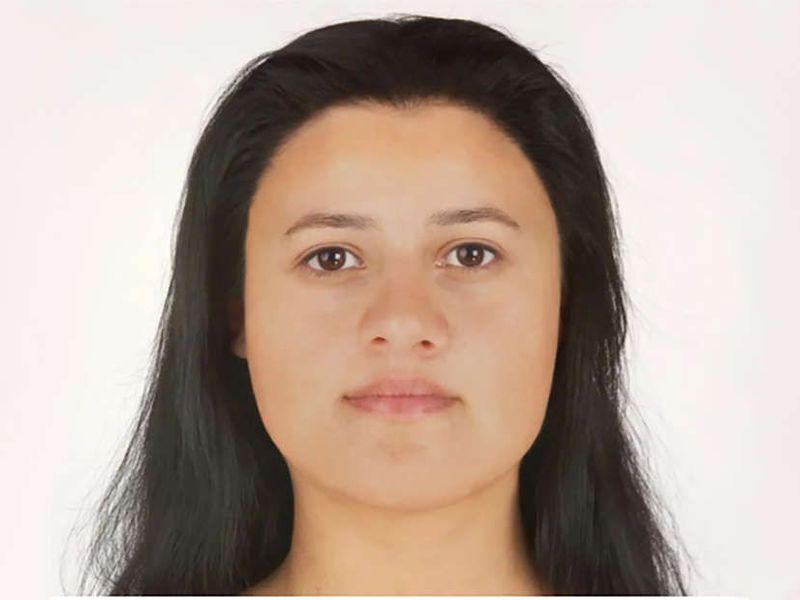
Set among the heather with a good view of the mountainous Scottish highlands to the south-west.
Access: Just south of Loch Semster, immediately east of a lane, a kilometer off the A895. Near Achavanich on the A895 there is a ruined broch on the shore of a loch.
Note: 'Ava' updates - a new reproduction based on updated DNA evidence, a 3D model of her cist, and now fully published with Open Access. More in the comments on our page, including the link to Channel 4's latest 'Bone Detectives'
You may be viewing yesterday's version of this page. To see the most up to date information please register for a free account.

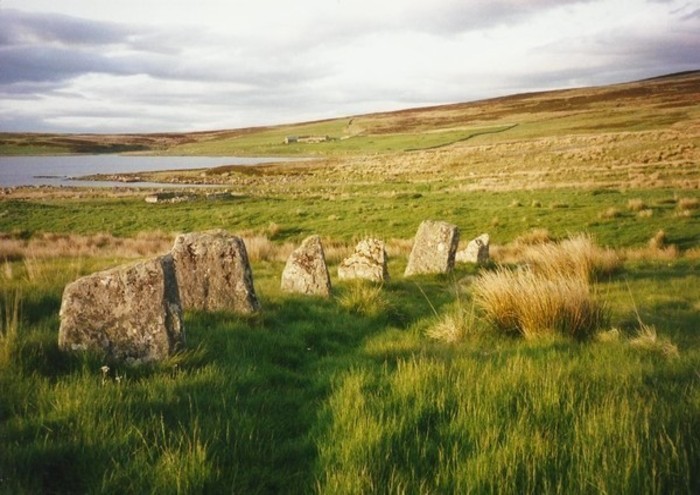


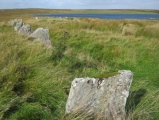


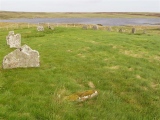

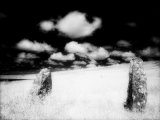
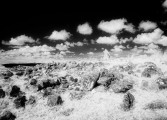
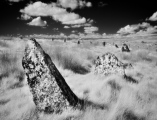
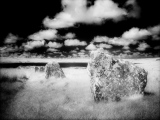

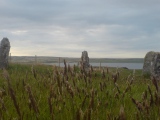
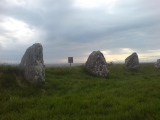
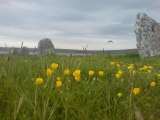
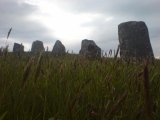
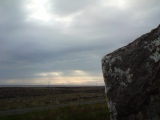

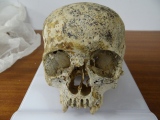

These are just the first 25 photos of Achavanich. If you log in with a free user account you will be able to see our entire collection.
Do not use the above information on other web sites or publications without permission of the contributor.
Click here to see more info for this site
Nearby sites
Key: Red: member's photo, Blue: 3rd party photo, Yellow: other image, Green: no photo - please go there and take one, Grey: site destroyed
Download sites to:
KML (Google Earth)
GPX (GPS waypoints)
CSV (Garmin/Navman)
CSV (Excel)
To unlock full downloads you need to sign up as a Contributory Member. Otherwise downloads are limited to 50 sites.
Turn off the page maps and other distractions
Nearby sites listing. In the following links * = Image available
97m ESE 121° Achkinloch* Chambered Cairn (ND18874172)
841m W 262° Greystell Castle* Broch or Nuraghe (ND17954167)
2.6km NNE 16° Ballachly Broch Broch or Nuraghe (ND19564423)
3.3km NNW 339° Rangag* Standing Stone (Menhir) (ND17684488)
3.4km N 352° Rangag East* Standing Stone (Menhir) (ND18384512)
4.6km SSE 156° Golsary* Broch or Nuraghe (ND20573749)
5.1km SSE 150° Rumster Broch* Broch or Nuraghe (ND21253725)
5.8km SSE 159° Forse House Stone Circle* Stone Circle (ND2076136315)
6.3km SSE 156° Appnag Tulloch* Broch or Nuraghe (ND2121035910)
6.5km SSE 161° Usshilly Tulloch* Broch or Nuraghe (ND2075035520)
6.7km S 185° Guidebest* Stone Circle (ND181351)
6.8km SSE 164° Wag of Forse* Stone Fort or Dun (ND20483520)
7.0km SSE 164° Forse House Burnt Mounds* Artificial Mound (ND20583500)
7.0km SE 142° Rhianrivach* Broch or Nuraghe (ND23033617)
7.0km SSE 160° Forse House Standing Stone* Standing Stone (Menhir) (ND21093513)
7.1km SSE 163° Forse House Chambered Cairns* Chambered Cairn (ND20673492)
7.2km SSE 165° Forse House Hut Circles* Ancient Village or Settlement (ND205348)
7.4km SSW 207° Tiantulloch* Broch or Nuraghe (ND15243522)
7.5km ENE 73° Camster Stone Rows* Multiple Stone Rows / Avenue (ND2601943791)
7.5km SE 138° Lybster* Early Christian Sculptured Stone (ND237361)
7.5km ENE 72° Grey Cairns of Camster : Round Cairn* Round Cairn (ND26034390)
7.5km N 350° Halsary Standing Stone Standing Stone (Menhir) (ND17644923)
7.6km ENE 70° Grey Cairns of Camster : Long Cairn* Chambered Cairn (ND26014420)
7.6km ENE 72° Grey Cairns of Camster : Chambered Round Cairn* Chambered Cairn (ND26084403)
7.7km ENE 59° Lower Camster Broch Broch or Nuraghe (ND25554558)
View more nearby sites and additional images

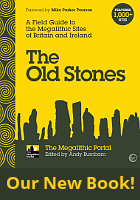




 We would like to know more about this location. Please feel free to add a brief description and any relevant information in your own language.
We would like to know more about this location. Please feel free to add a brief description and any relevant information in your own language. Wir möchten mehr über diese Stätte erfahren. Bitte zögern Sie nicht, eine kurze Beschreibung und relevante Informationen in Deutsch hinzuzufügen.
Wir möchten mehr über diese Stätte erfahren. Bitte zögern Sie nicht, eine kurze Beschreibung und relevante Informationen in Deutsch hinzuzufügen. Nous aimerions en savoir encore un peu sur les lieux. S'il vous plaît n'hesitez pas à ajouter une courte description et tous les renseignements pertinents dans votre propre langue.
Nous aimerions en savoir encore un peu sur les lieux. S'il vous plaît n'hesitez pas à ajouter une courte description et tous les renseignements pertinents dans votre propre langue. Quisieramos informarnos un poco más de las lugares. No dude en añadir una breve descripción y otros datos relevantes en su propio idioma.
Quisieramos informarnos un poco más de las lugares. No dude en añadir una breve descripción y otros datos relevantes en su propio idioma.